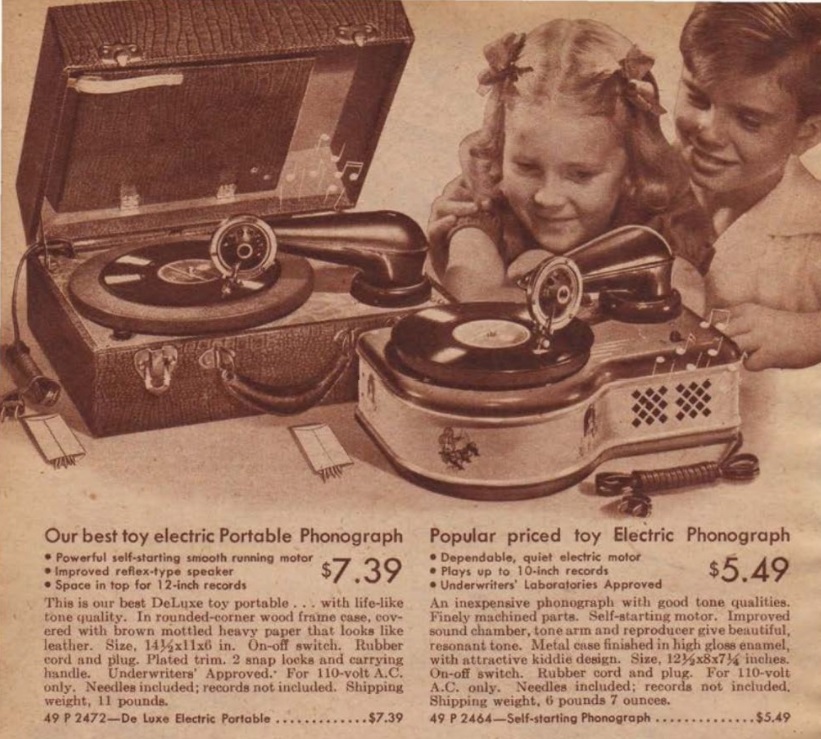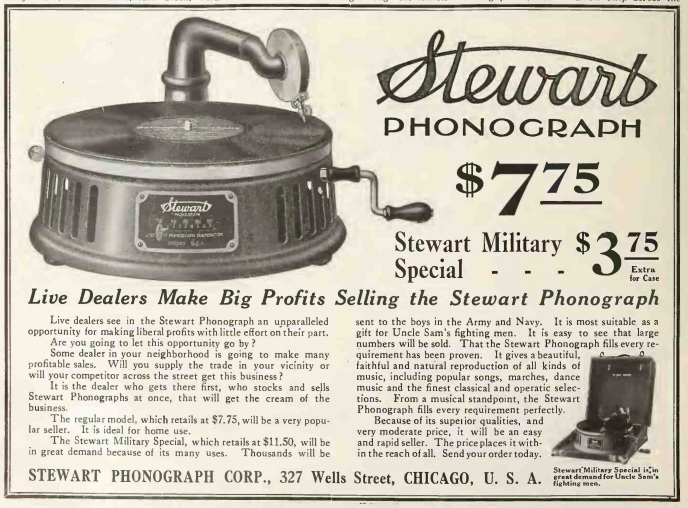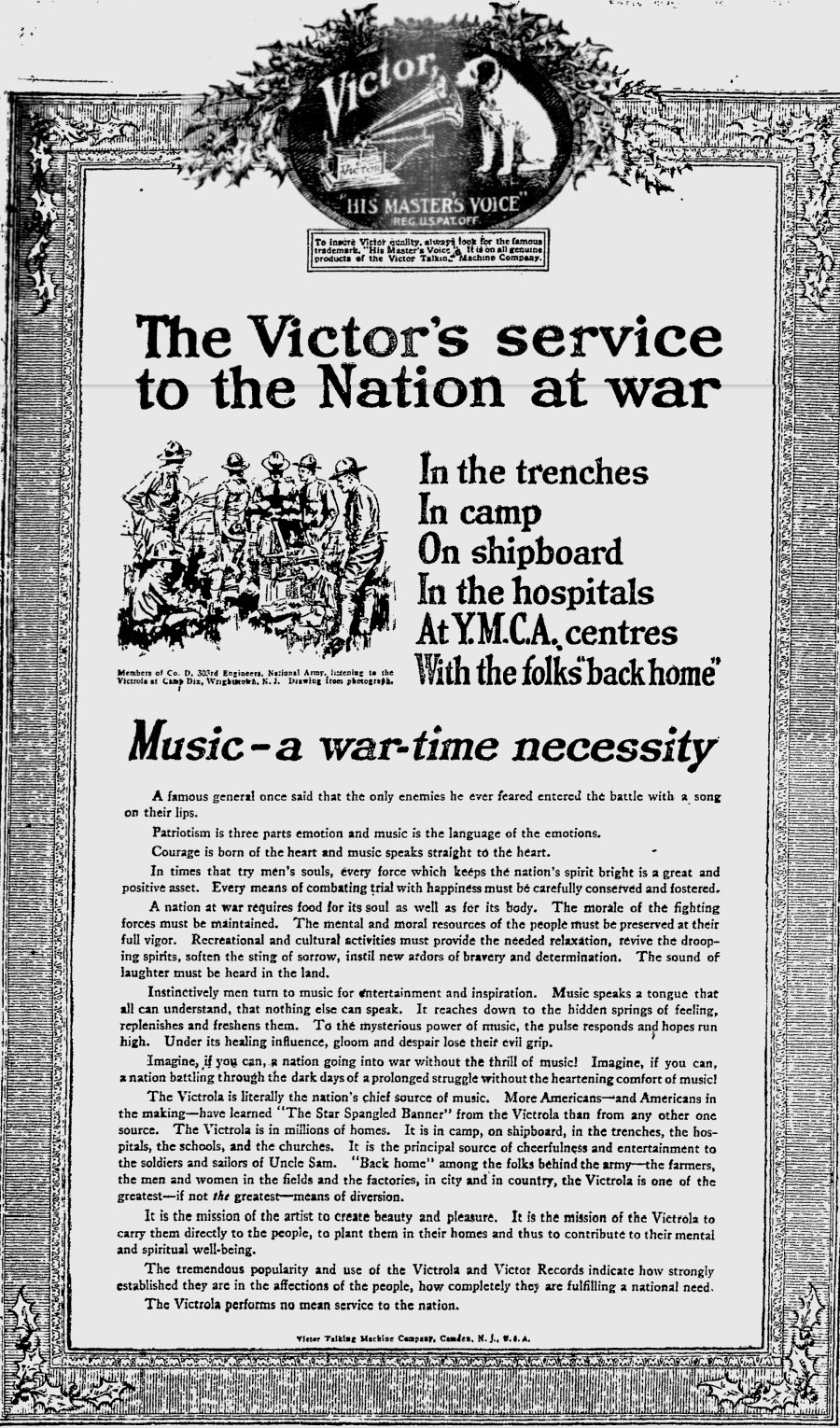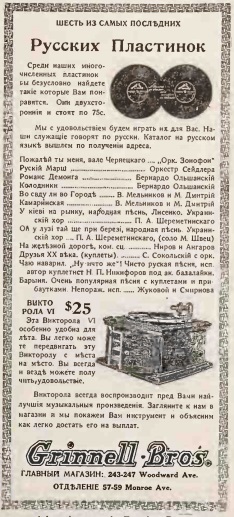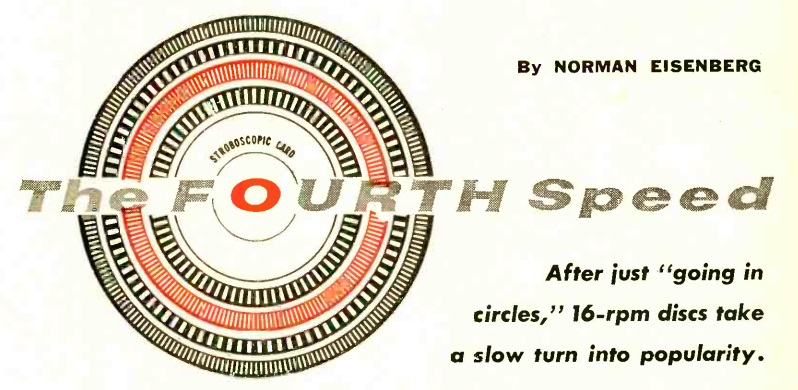 Sixty years ago, the August 1957 issue of Popular Electronics carried an article about the forgotten stepchild of audio recording: The 16 RPM record. More precisely, the records played at 16-2/3 revolutions per minute, and most moderately priced phonographs in the 1960’s would play the speed, along with the more common 33, 45, and 78 RPM speeds.
Sixty years ago, the August 1957 issue of Popular Electronics carried an article about the forgotten stepchild of audio recording: The 16 RPM record. More precisely, the records played at 16-2/3 revolutions per minute, and most moderately priced phonographs in the 1960’s would play the speed, along with the more common 33, 45, and 78 RPM speeds.
The 1957 article predicted, erroneously it turns out, that “the growing catalog of recorded material and new playback equipment in all price ranges proclaim that the tide may yet turn to 16 rpm and roll into the arena with quite a splash.”
A few musical recordings were issued on 16 RPM. Most notably, some records were produced for the benefit of Chrysler’s Hiway Hi-Fi experiment, which included a record player for the car. But the article noted that the speed, while longer playing, had inherently lower fidelity than higher speeds. At the time, the maximum frequency response went only to about 9000 Hz. The format was used mostly for “talking books.” The best seller was probably the Bible, which was recorded in the early 1950’s at the lower speed. If you search eBay today for 16 RPM records, the most common search result is this talking Bible.
As a kid, my record player had the setting for 16 RPM. Eventually, curiosity got the better of me, and I checked out a 16 RPM talking book from the library, just so that I could play it at home.
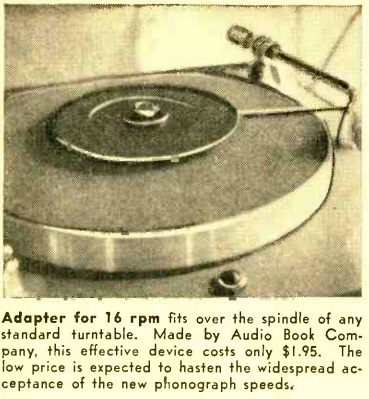 The article does include an interesting adapter, shown here. While the mechanical details are not explained, it allows a 16 RPM record to be played on a 33 RPM turntable. Presumably, it is powered by the spinning 33 RPM platter, and gears this down to 16 RPM for the record placed on top.
The article does include an interesting adapter, shown here. While the mechanical details are not explained, it allows a 16 RPM record to be played on a 33 RPM turntable. Presumably, it is powered by the spinning 33 RPM platter, and gears this down to 16 RPM for the record placed on top.
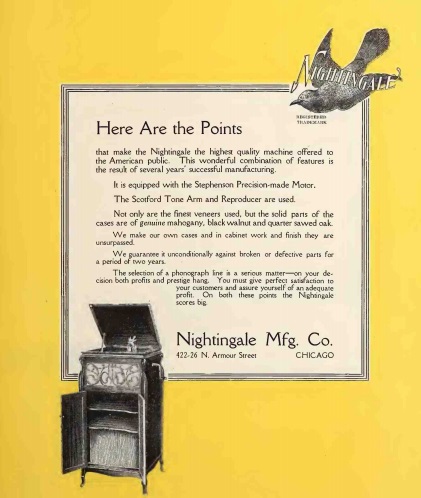 Shown here is an ad for phonographs from the Nightingale Mfg. Co. of 422-26 Armour Street, Chicago. The ad, which appeared a hundred years ago this month in the June 1918 issue of Talking Machine World, describes the Nightingale as “the highest quality machine offered to the American public.”
Shown here is an ad for phonographs from the Nightingale Mfg. Co. of 422-26 Armour Street, Chicago. The ad, which appeared a hundred years ago this month in the June 1918 issue of Talking Machine World, describes the Nightingale as “the highest quality machine offered to the American public.”
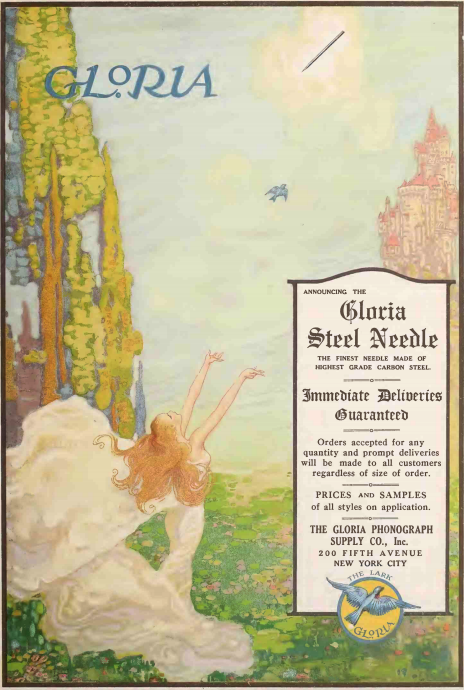
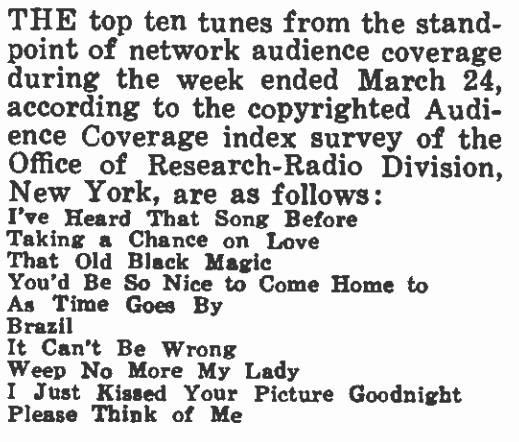
 Shown here in the mid-1920s are the
Shown here in the mid-1920s are the 